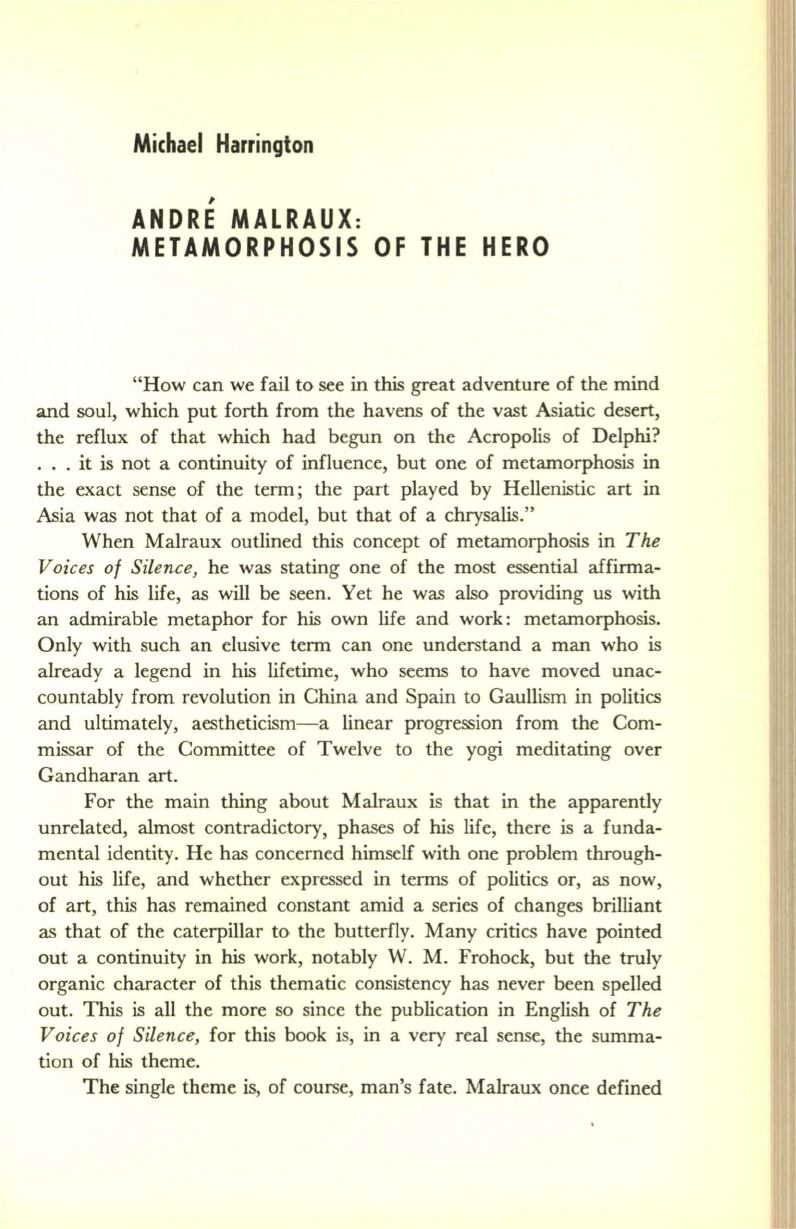
Michael Harrington
~
ANDRE MALRAUX :
METAMORPHOSIS OF THE HERO
"How can we fail to see in this great adventure of the mind
and soul, which put forth from the havens of the vast Asiatic desert,
the reflux of that which had begun on the Acropolis of Delphi?
... it is not a continuity of influence, but one of metamorphosis in
the exact sense of the term; the part played by Hellenistic art in
Asia was not that of a model, but that of a chrysalis."
When Malraux outlined this concept of metamorphosis in
The
Voices of Silence,
he was stating one of the most essential affirma–
tions of his life, as will be seen. Yet he was also providing us with
an admirable metaphor for his own life and work: metamorphosis.
Only with such an elusive term can one understand a man who is
already a legend in his lifetime, who seems to have moved unac–
countably from revolution in China and Spain to Gaullism in politics
and ultimately, aestheticism- a linear progression from the Com–
missar of the Committee of Twelve to the yogi meditating over
Gandharan art.
For the main thing about Malraux is that in the apparently
unrelated, almost contradictory, phases of his life, there is a funda–
mental identity. He has concerned himself with one problem through–
out his life, and whether expressed in terms of politics or, as now,
of art, this has remained constant amid a series of changes brilliant
as that of the caterpillar to the butterfly. Many critics have pointed
out a continuity in his work, notably W. M. Frohock, but the truly
organic character of this thematic consistency has never been spelled
out. This is all the more so since the publication in English of
The
Voices of Silence,
for this book is, in a very real sense, the summa–
tion of his theme.
The single theme is, of course, man's fate . Malraux once defined


